You may be wondering, just what is the difference between the coral snake vs corn snake? The two snakes share bright, colorful appearances and grow to similar sizes. They even live in some of the same areas of North America. In fact, there are over 50 types of coral snakes in both the New World and the Old World. Here, we’ll focus on the eastern coral snake (Micrurus fulvius) and the common corn snake (Elaphe guttata).
Read on to learn the exact differences between coral snakes and corn snakes!
Comparing Coral Snake vs Corn Snake
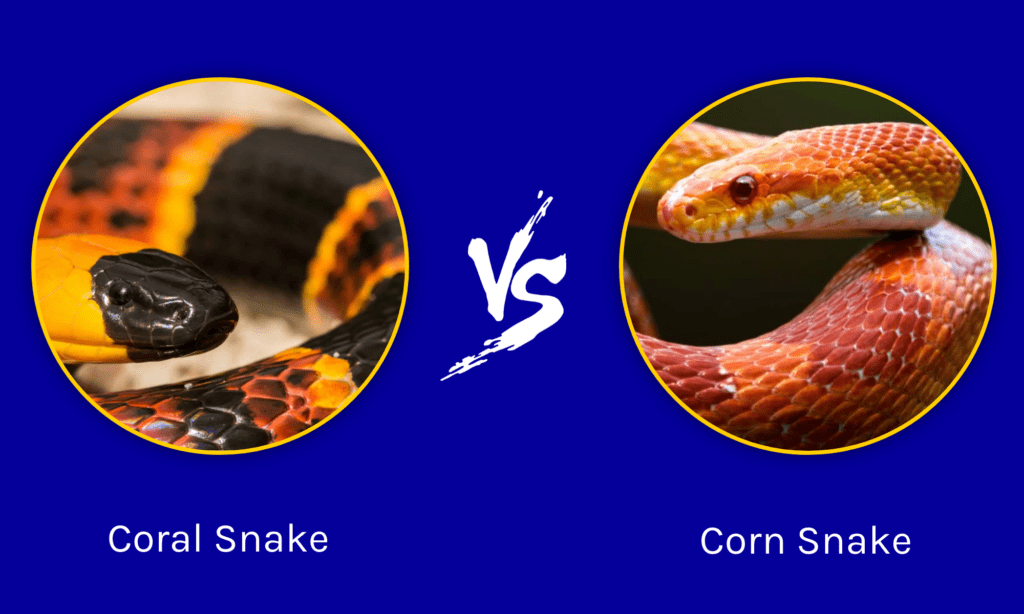
| Coral Snake | Corn Snake | |
| Size | 18-38 inches | 30-48 inches |
| Appearance | Black, yellow, and red stripes. Head the same width as the body | Light orange with dark orange blotches. Narrow head and round pupils |
| Location and Habitat | Southeastern United States; wooded sandhills | Disparate populations throughout the Southeastern United States; dry areas with plenty of rodents |
| Behavior | Non-aggressive, but venomous. Strictly terrestrial, spend most of their time underground | Non-aggressive and not venomous. Spend much of their time in rodent burrows |
| Lifespan | 6-8 years | 6-8 years |
Key Differences Between Coral Snake vs Corn Snake
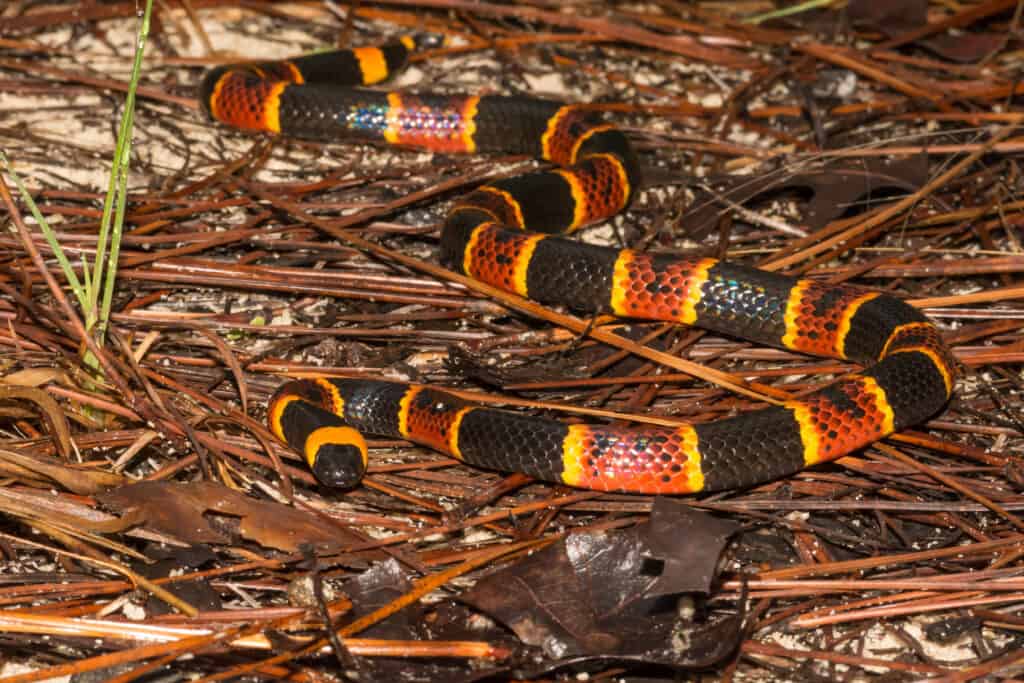
Coral snakes are striped, whereas corn snakes display a blotched pattern with between 27-40 blotches.
©Jay Ondreicka/Shutterstock.com
The key difference between the coral snake and corn snake is that the coral snake is venomous, while the corn snake is not. Corn snakes grow larger than coral snakes and have slightly thicker bodies. Coral snakes are strictly terrestrial—they spend no time in the water or in trees. Corn snakes, however, are both terrestrial and arboreal. Coral snakes have stripes of red, black, and yellow, while corn snakes have a blotched pattern made up of shades of orange.
Let’s take a closer look at the exact differences between coral snakes and corn snakes!
Coral Snake vs Corn Snake: Size

Corn snakes grow to between 3 and 4 feet.
©Enrique Ramos/Shutterstock.com
Most corn snakes grow to around three feet in size, but the largest can reach six feet long. These snakes have a medium build similar to that of the water moccasin or rat snake. They’re not pit vipers, like rattlesnakes, and lack rattles or heat-sensing pits.
In comparison to corn snakes, coral snakes have much more delicate bodies. They don’t grow quite as big as corn snakes, with the biggest coral snakes topping out at just over three feet long. In addition to having lighter bodies, coral snakes also have smaller, narrower heads. In fact, their heads are barely distinguishable from their bodies.
Coral Snake vs Corn Snake: Location and Habitat
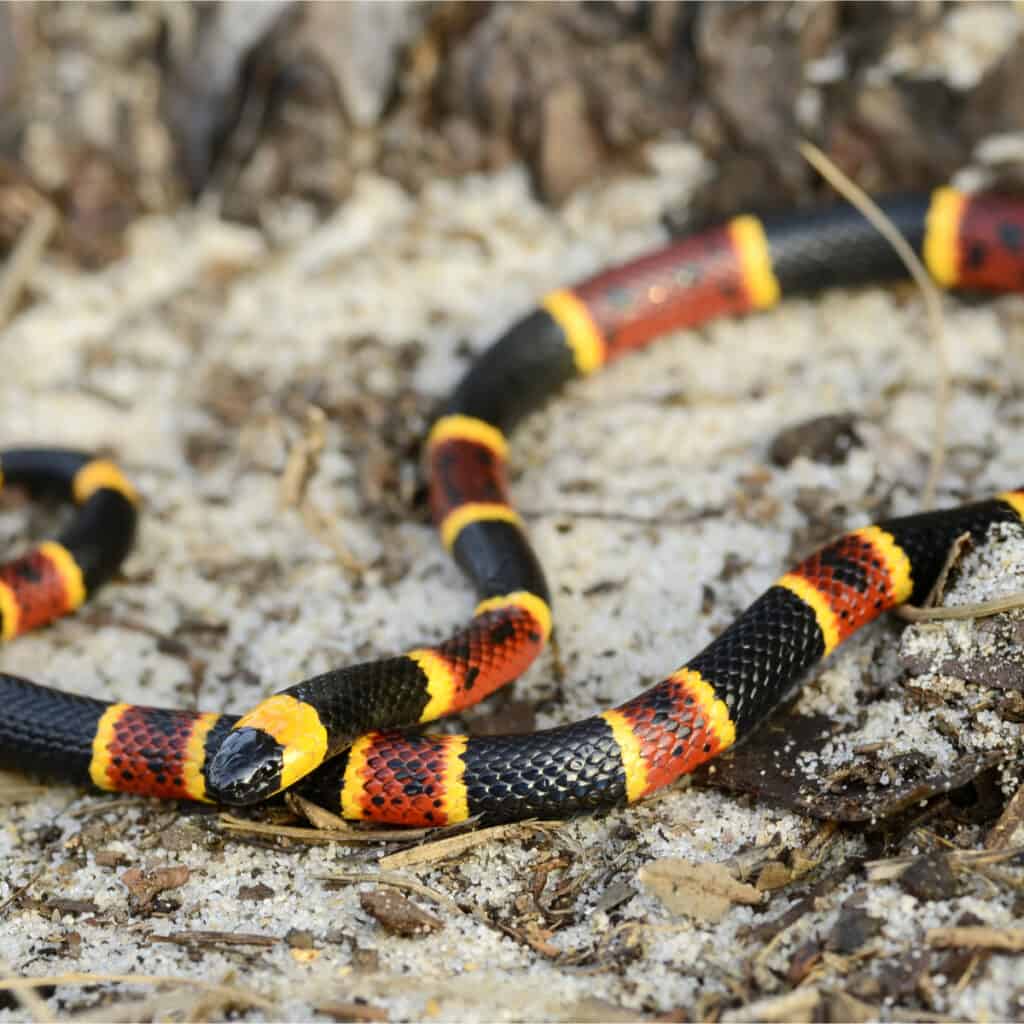
Coral snakes spend almost all of their time underground.
©Patrick K. Campbell/Shutterstock.com
Eastern coral snakes have a very restricted range. They’re found only in North America: in the coastal lowlands of Florida and the surrounding states, as far north as North Carolina and as far west as Louisiana. There is also an isolated population of coral snakes in central Alabama. Coral snakes are strictly terrestrial and spend most of their time underground in sandy soil. They’re most common in pine woods and scrubland.
Corn snakes have a broader distribution than coral snakes. They live as far north as New Jersey, and as far west as Texas. There are numerous disjunctive populations throughout the southeastern United States. Corn snakes live in many of the same habitats as coral snakes. But, in addition to slithering on the ground, corn snakes also hunt in the trees. They’re most common in sandy uplands, but are also frequently seen in urban, suburban, and agricultural settings.
Coral Snake vs Corn Snake: Appearance

Corn snakes have blotches across their backs.
©Kurit afshen/Shutterstock.com
When it comes to the coral snake vs corn snake, appearance is key. Coral snakes have incredibly unique appearances. To start, their heads are no wider than their bodies, which gives them a worm-like appearance. They have round black eyes, and tiny fangs at the front of their mouth. Coral snakes have regular black and red stripes separated by thin yellow stripes, giving them the characteristic coral snake appearance.
Corn snakes have more snake-like bodies than coral snakes. Juveniles are dusky tan in color, with regular brown-orange blotches across their backs. Adults have a brighter, more orange base color, with dark orange blotches. These snakes have round eyes and narrow heads.
Coral Snake vs Corn Snake: Behavior
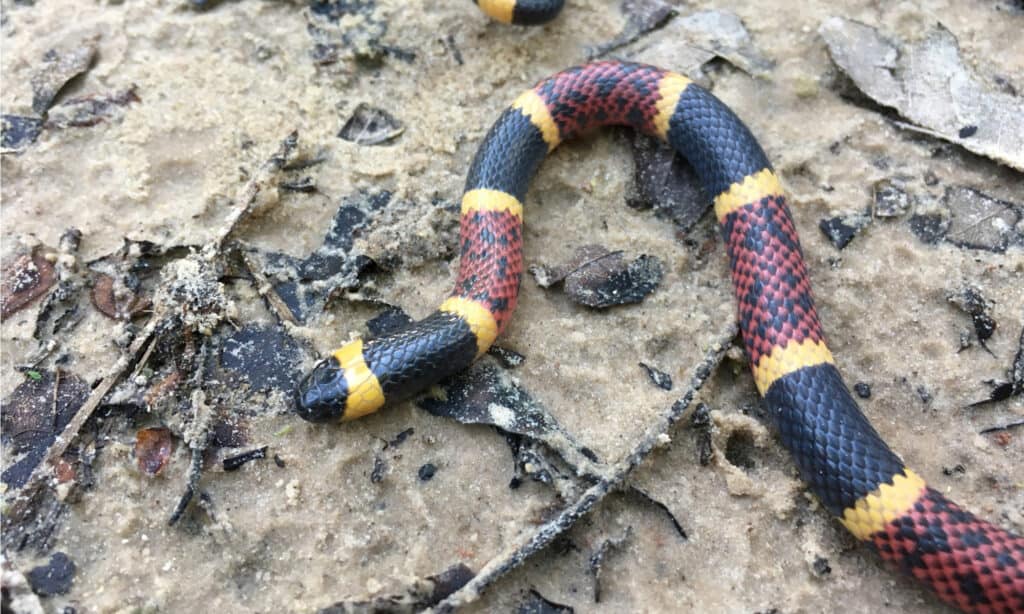
Coral snakes have permanent fangs located at the front of the mouth.
©Joe Farah/Shutterstock.com
Spending most of their time underground, coral snakes hunt for frogs, lizards, worms, and small snakes. They strike quickly to envenomate, then wait for the prey to weaken and die before moving in to eat. These snakes don’t give birth to live young, instead they lay eggs that hatch in late summer.
Corn snakes are very docile and lack venom, making them the perfect pet snake for beginner snake enthusiasts. Like coral snakes, corn snakes spend a lot of time underground, hunting for rodents. They eat mice, small rats, voles, shrews, birds, small snakes, lizards, and frogs. Both coral snakes and corn snakes are often found in suburban areas.
Coral Snake vs Corn Snake: Lifespan
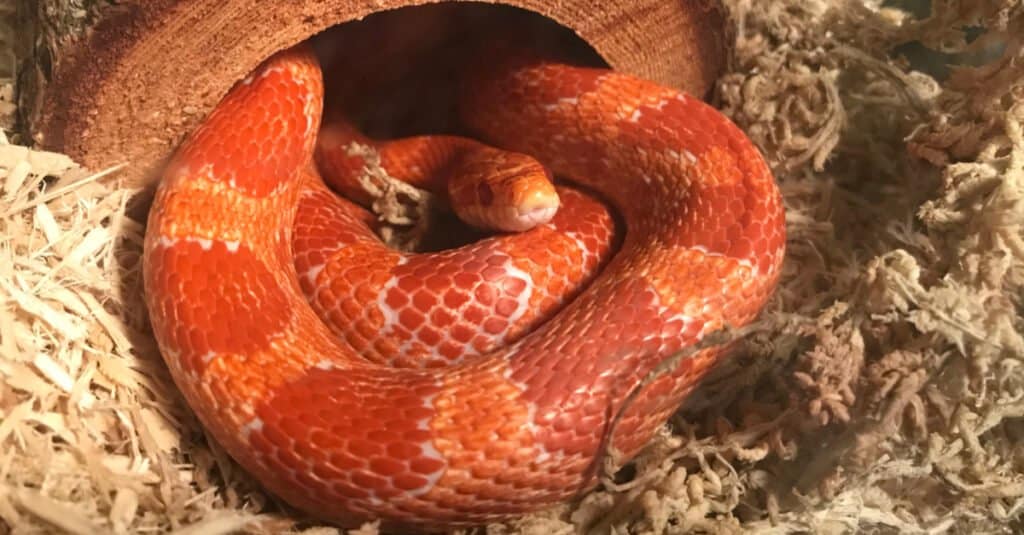
Corn snakes live less than ten years in the wild.
©Photohobbiest/Shutterstock.com
Coral snakes and corn snakes may have many differences, but one thing they do have in common is their estimated lifespan. In the wild, both species are thought to live for an average of seven years. Coral snakes are secretive, and little studied, so their lifespan is, in many ways, a best estimate. Corn snakes however are very popular pet snakes, so their lifespan is better studied. In captivity, corn snakes frequently surpass ten years of age.
The photo featured at the top of this post is © KAMONRAT/Shutterstock.com
Discover the "Monster" Snake 5X Bigger than an Anaconda
Every day A-Z Animals sends out some of the most incredible facts in the world from our free newsletter. Want to discover the 10 most beautiful snakes in the world, a "snake island" where you're never more than 3 feet from danger, or a "monster" snake 5X larger than an anaconda? Then sign up right now and you'll start receiving our daily newsletter absolutely free.
Thank you for reading! Have some feedback for us? Contact the AZ Animals editorial team.






